We live in a time where pretty much anything can be seen and heard in real-time. With instant messaging and 24/7 news updates, it is easier than ever for the dairy industry to fall into making stereotypical assumptions based on a person’s gender, culture, religion, or physical attributes. The global dairy business has never been so in-the-screen-faces of their dairy consumers and their own competitors. When the supply chain is disrupted, you know it. You see the empty food shelves? You see the protests. When animals are mistreated, it is shown in shocking close-ups. Gender equality is instantly highlighted in the news. Instant data inspires instant analysis. But to be fair, instant analysis can also be instantly misleading.
Dairy Miss-Information Versus Historical His-Information
Dairying is not a male or female thing. Everyone reading this article can point to numerous recent Blogs, Seminars, Magazine articles and Research papers to support their position. I bring this up because of the “rock and hard place” situation many of us find causing division in our own workplace. His-story versus Her-story. Must the work of dairying be one gender or the other? Although it is easy to acknowledge the progress of positive examples, it is impossible to eradicate bias completely. We have all been raised with some form of gender bias. If we must play the gender card, we have already fallen into the gender trap. We either “act” like a boss knocking at the door or is the door being opened to all. Is there a welcome mat or a doormat?
PROBLEM? DISPARITY OR LACK OF CLARITY
Throwing out the Ladies and the Boys’ Club with the Bathwater
Sometimes the easy question asked by women is, “Are we are own problem?” The easier answer is: “We are all part of the problem.” Female decision-makers are just as biased as men. It follows then that we are all part of the solution. Men are in positions of power where they can (and do) help the women in their organizations rise to the top. Helping anyone rise isn’t measured by a pat on the back or a verbal, “way to go!” Sometimes the most help is a informative analysis of the job requirements accompanied by the strengths and weaknesses of the person. This opens the opportunity to improve and grow in the position. Clarity isn’t just positive, sometimes it requires recognition of what may hold the person back. Regardless of gender, workers need to be clear about qualifications, on job training, reimbursement, and incentives. The real pros and cons are not pro gender or con gender. The more we can work together to create positive change, the faster that change will happen.
THE POSITIVE AND NEGATIVE POWER OF THE GENDER GAP
We all have been conditioned to jobs that are Ma’am power or man-power. When you see a dairy job discussed, do you have an automatic gender response?
- Calving
- Bookkeeping
- Team boss
- Board representative
- Expert nutritionist
- Genetic Advisor
- Dairy Cow Vet
Beyond the Glass Half Full
There was a time when we didn’t talk frequently about Glass Ceilings in the workplace. Now we have added the Glass Cliff. Glass Cliff refers to the phenomenon of women in leadership roles, such as business executives in the corporate world and female candidates for political office, being more likely than men to be promoted to leadership roles during periods of crisis or downturn, when the chance of failure is highest.
We might live happily with the “Glass Half Full” but now we have “Glass Walls” and “Glass Elevators” which refer to institutional barriers that isolate some employees — traditionally women and minorities — into jobs that don’t lead to executive advancement within a business.
IS DAIRY MOVING OUTSIDE THE GENDER BOX OR TO FEMALE HEADLINES?
Headlines about the success of dairy women are nice to see and I must admit that seeing the listing of female judges at cattle shows was partially responsible for the writing of this article. The announcement noted that “An all-female line-up of Judges from the US, UK and Canada will judge his year’s UK Dairy Expo!” For those of you who follow The Milkhouse, you may have seen the comments by a reader who noted, “A good judge is a good judge. Why are we discussing a M vs F as some difference? Kinda sad. These women are no better or worse than anyone else. They can handle the task obviously so let them and let’s stop putting them in a box.” Dairy recognizes ability … in the barn, in the board room and in the show ring.
“OLD BOY BOYS CLUBS AND GIRLS ONLY) JOB SILOS HOLD GROWTH DOWN”
Does your dairy put employees into silos? What about other on or off-farm dairy interactions which you keep in their individual silos. Now you have silo disadvantages such as:
- There is limited interaction with people outside of the silo.
- Silos can lead to resistance to change.
- People within silos may avoid cross-department collaboration.
- Information silos, which exist when information isn’t shared between the barn, board rooms, and suppliers, can hamper dairy growth and efficiency.
- Think of support staff like veterinary, nutrition and feed suppliers. Silos in these areas can cause duplication of effort, lack of synergy and missed opportunities.
- Women are the best advocates for the dairy industry. Is this progress or another silo?
Silos can turn into a big problem for dairy workplace cohesion and employee engagement. They can result in weakened trust in the company’s leadership and deaden motivation for employees who end up feeling incapable of changing the culture and are left wanting more.
ONE STATISTIC ABOUT DAIRY WOMEN OWNERS
The salaries of women who own dairies has been reported to be 80% of the salary of male dairy farm owners. So let’s ask the second question. “Do male dairy farmers make more or less than the salaries of owners in non-agricultural businesses?” It was not easy to find a statistic to answer this question. Is this bias as well or something more?
IS DAIRYING DRIVEN BY MAKING MORE?
We think we know the solution to getting the best work done in the dairy industry. Clearly, it all boils down to “more”. But what are we adding up to get the success sum? More money on each dairy barn or business bottom line? More money from the government? More perc money, trips or gifts from suppliers or customers? To remain more relevant more money is definitely a priority.
But what must happen BEFORE more money?
In dialogue with THE BULLVINE readers and our networks of dairy farmers and dairy research and business connections, we are hearing that, while the above list of things is nice, more is actually referring to three things: more workers – more workers and -more workers. Every sector needs to have proactive productive staff ahead of everything else!
WHAT’S GENDER GOT TO DO WITH MORE?
It’s simply undeniable that in virtually every hiring decision, discrimination is still quite common. There are simply too many studies out there on virtually every type of decision — hiring, housing, loan approvals, etc. showing that, if the person making the decision knows the gender or the race of the person applying, the likelihood of discrimination goes up, even when the applications are identical in every relevant way. That is largely because of our implicit biases, something that even the most enlightened among us can easily fall into without even realizing we’re doing it.
FOR FURTHER READING:
Before we wrap this article up, it might be useful to take note of other sources that are discussing this topic:
- USDA – USDA ERS
- Canada – agriculture.canada.ca
- Zippia – dairy farmer demographics and statistics in the US
TECHNOLOGY: DO SUCCESSFUL DAIRIES HAVE THE REMOTE-EST IDEA?’
While looking for the correct solution, you might think that technology is a non-gender answer. But that may not be factually true either. Who takes up new technology faster? Men or woman? Where’s the proof of that? If technology has a huge effect on money-making, there might be a corresponding shift in who manages it or who is allowed to manage it. The competition for productive effective labour is intensifying. It encompasses many gender issues such as:
- Gender-neutral parental leave.
- Access to training
- Paid time for training.
- Diversity hiring applied to actions.
These things are becoming true success differentiators.
THE BALANCE BETWEEN HUMAN WORKERS AND INTELLIGENT ROBOTS
We now have increasingly capable robots and artificial intelligence (AI) systems that can take on tasks that were previously only done by humans. This leaves employers with some key questions: how do we find the balance between intelligent machines and human intelligence? What roles should be given over to machines? Which roles are best suited to humans? There’s no doubt that automation will affect every industry, so dairy leaders must prepare the people and technological environments in their dairies and dairy support organizations for the changing nature of work. Change is here. What do you fear?
The Bullvine Bottom Line
There will always be reasons to be afraid. You could find yourself paralyzed with fear because you think your business is on the line, or you could be afraid of making a mistake and feeling ridiculed, disliked, misunderstood or just plain stupid. These fears, while normal and understandable, can also be quite destructive to growing your dairy business. Some of the most inventive and game-changing ideas have been born out of errors. Original ideas come to life when you dare to be different, keep an open mind, and have no fear of crashing and burning. This is true regardless of the gender of your team.

Get original “Bullvine” content sent straight to your email inbox for free.





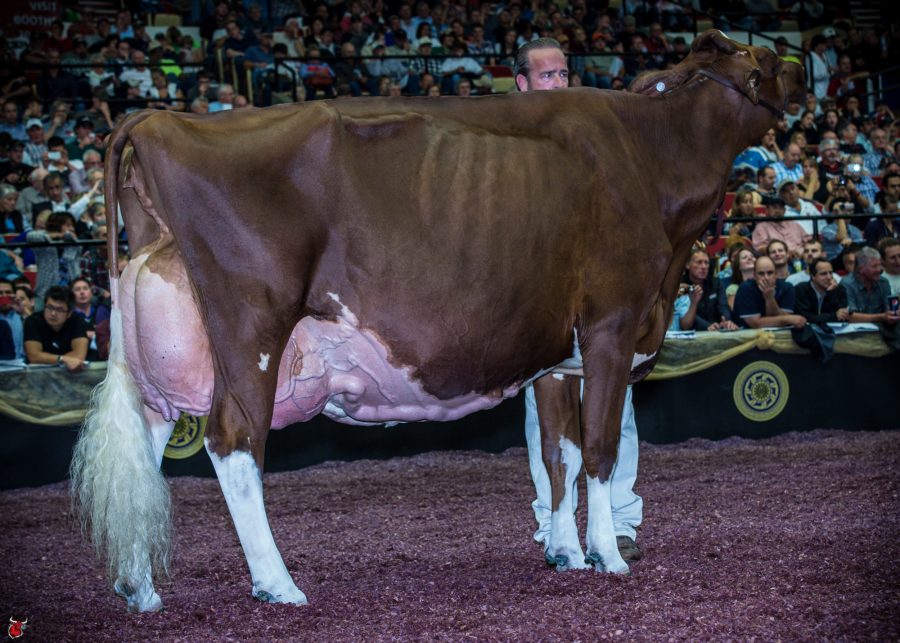
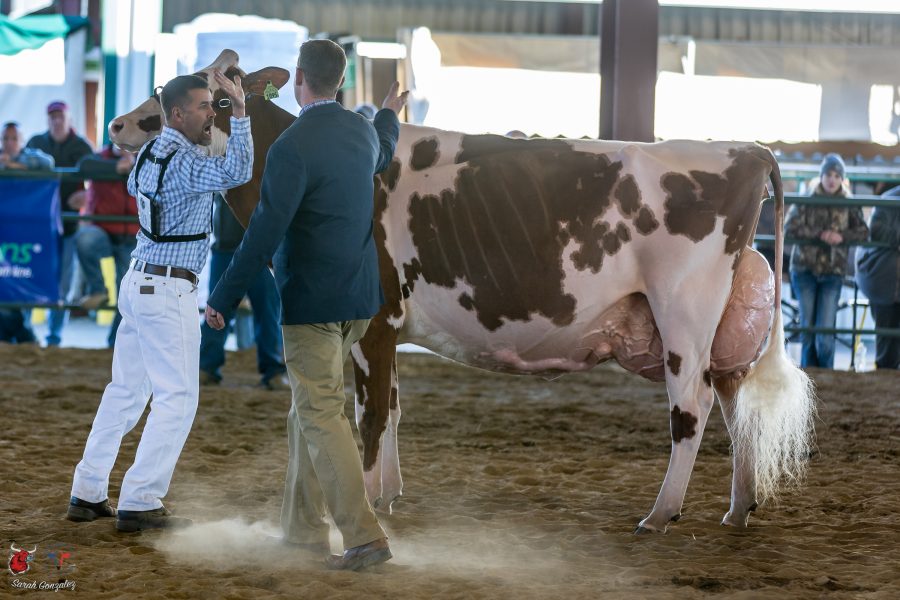
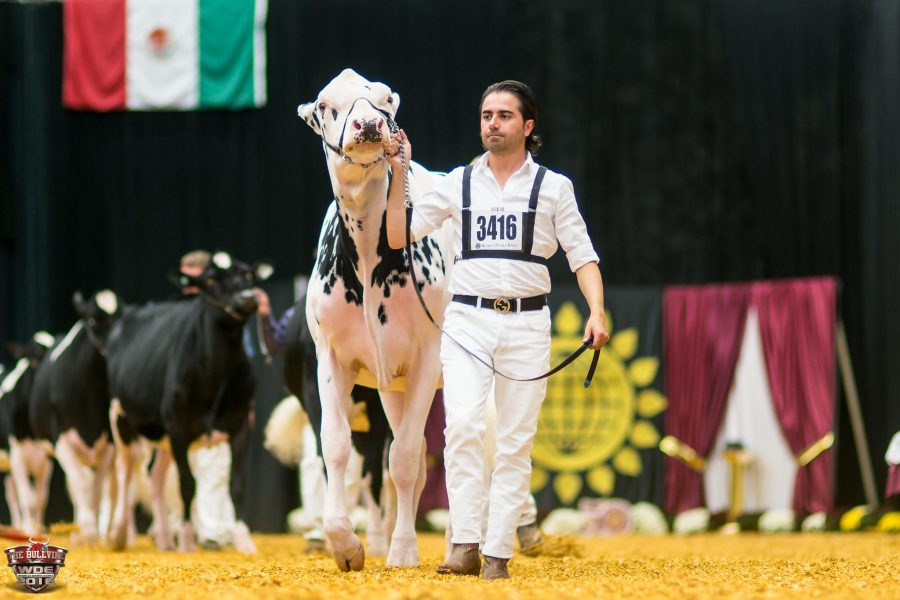
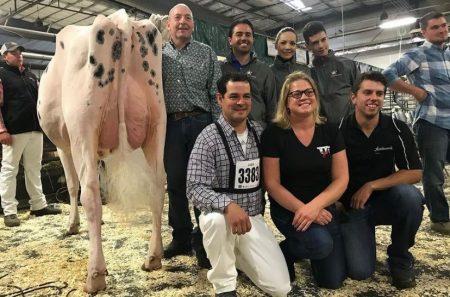 ”SHAKIRA STOOD OUT FROM THE REST FROM THE BEGINNING”
”SHAKIRA STOOD OUT FROM THE REST FROM THE BEGINNING”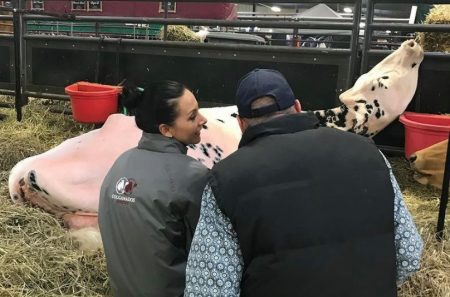
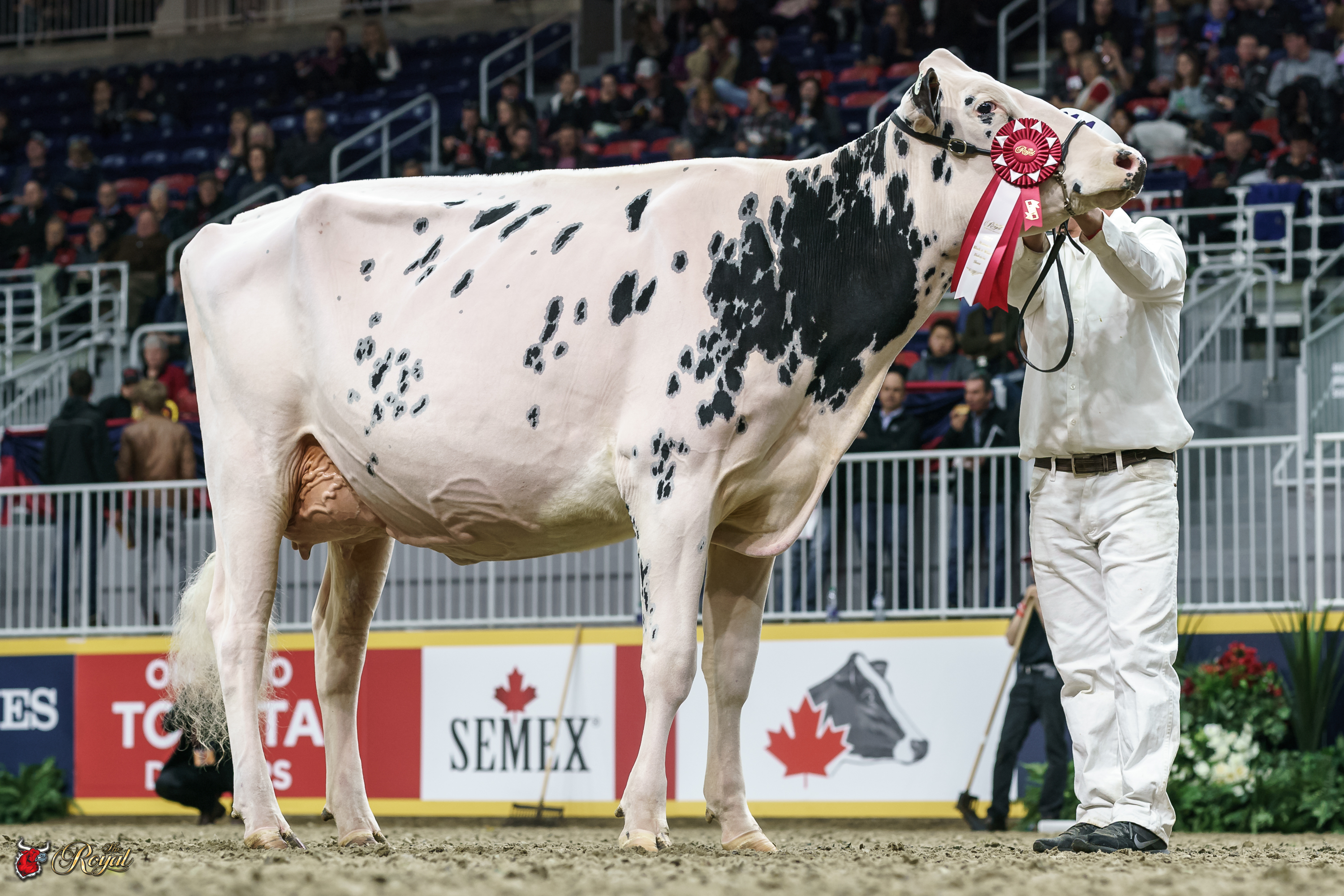
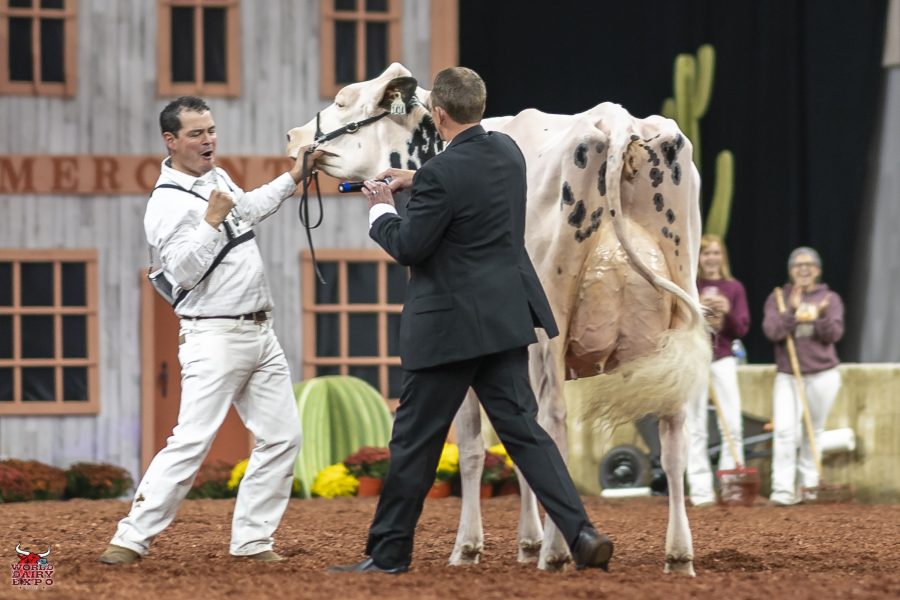
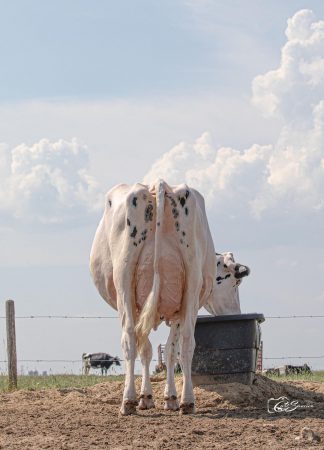 “SHAKIRA’S STAR TREK”
“SHAKIRA’S STAR TREK”
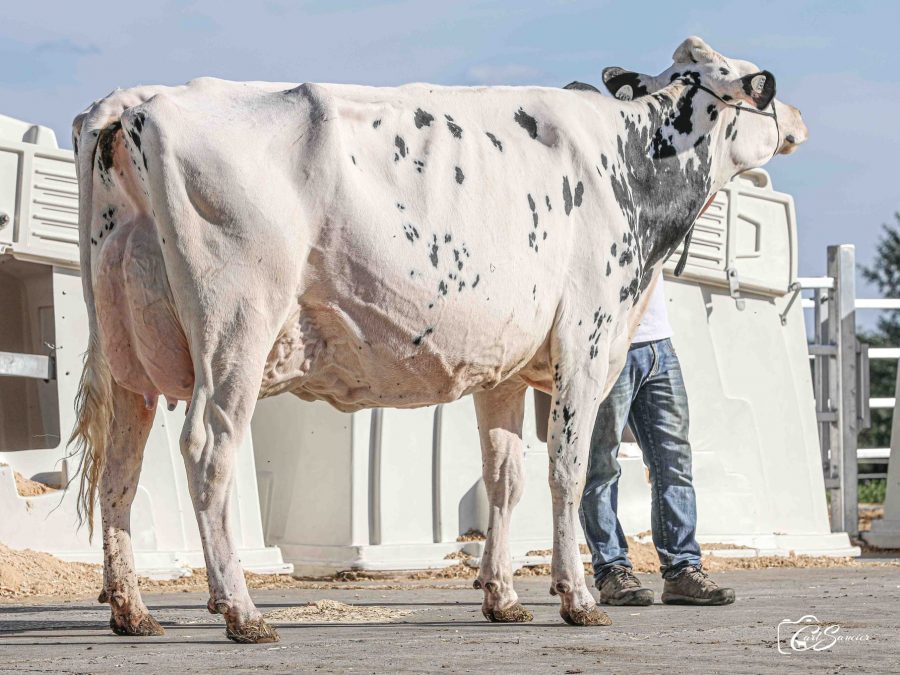
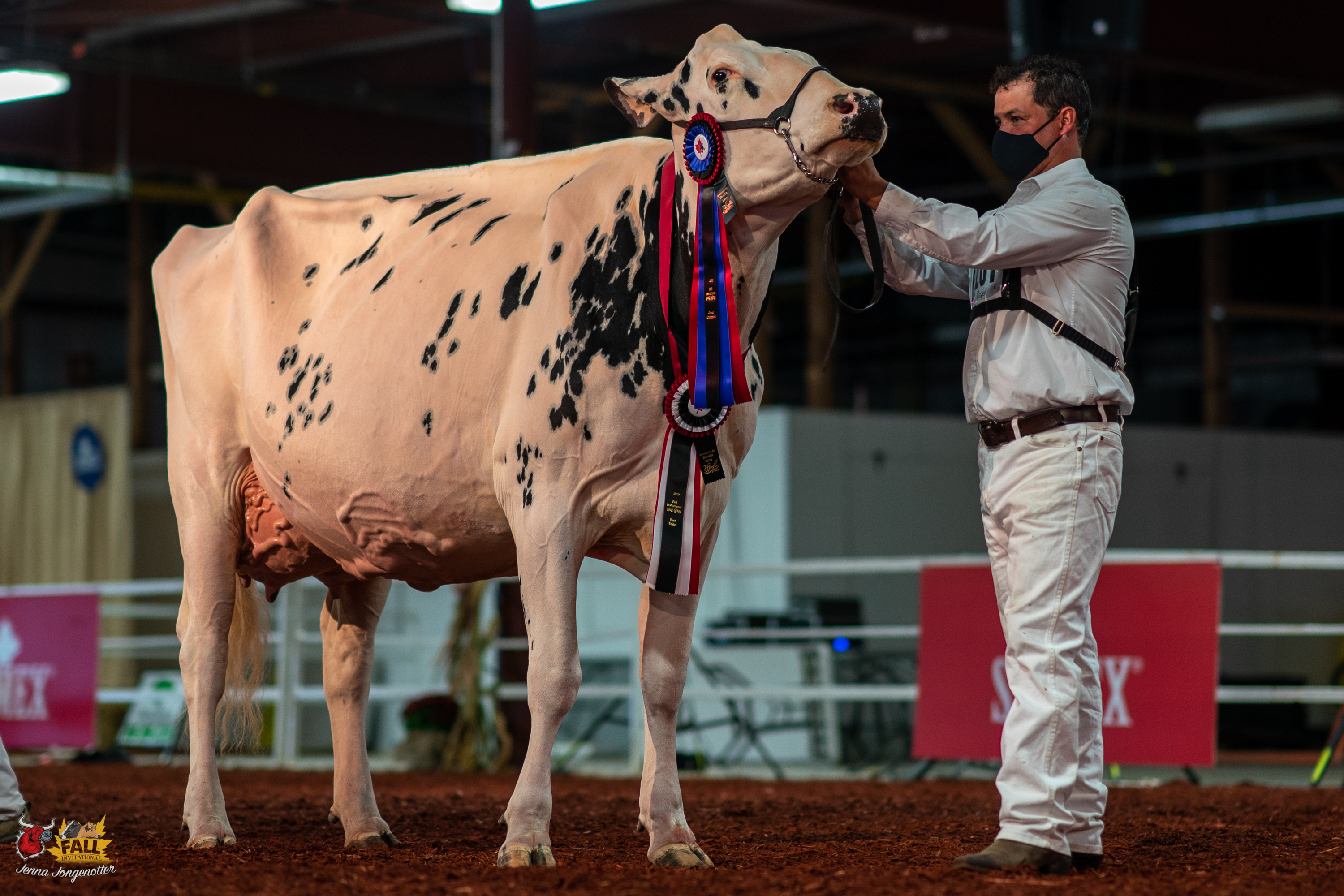
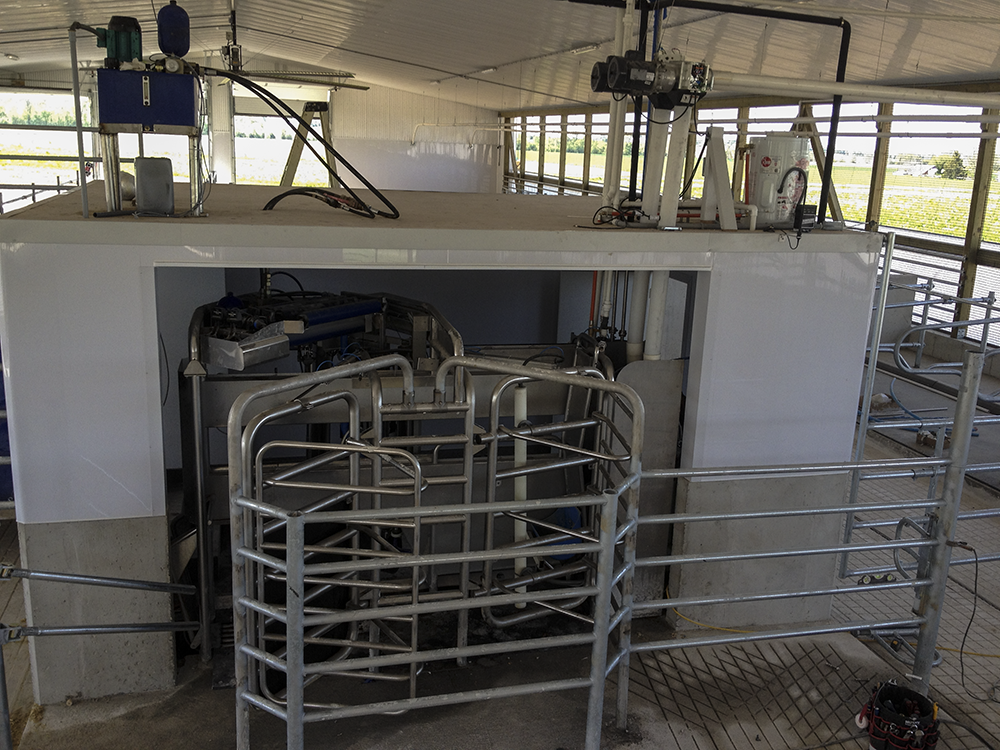 “We farmed before the invention of electricity, tractors and silos and never dreamed that a time would come where we could be watching live weather forecasting, while we worked the farm fields in air-conditioned comfort.” My father, George Heatherington, 1999.
“We farmed before the invention of electricity, tractors and silos and never dreamed that a time would come where we could be watching live weather forecasting, while we worked the farm fields in air-conditioned comfort.” My father, George Heatherington, 1999.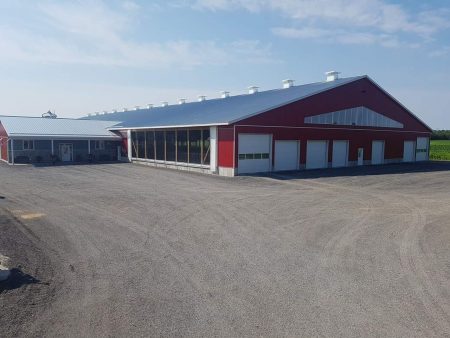 “I am the third generation dairy farmer at our current location which is a half hour South of downtown Ottawa, “says Justin. Riverdown is truly a family farm operation he explains. “I farm with my parents and grandparents and have no employees outside of family labour.” The farm is comprised of 650 acres of which 550 are owned. “We milk 110 cows in a new robotic dairy barn with 2 Lely Astronaut A4 robots.” The robotic change is recent for the Velthuis family. “We moved in just over one year ago. All animals except the show heifers and calves on milk are housed in the new barn.”
“I am the third generation dairy farmer at our current location which is a half hour South of downtown Ottawa, “says Justin. Riverdown is truly a family farm operation he explains. “I farm with my parents and grandparents and have no employees outside of family labour.” The farm is comprised of 650 acres of which 550 are owned. “We milk 110 cows in a new robotic dairy barn with 2 Lely Astronaut A4 robots.” The robotic change is recent for the Velthuis family. “We moved in just over one year ago. All animals except the show heifers and calves on milk are housed in the new barn.” 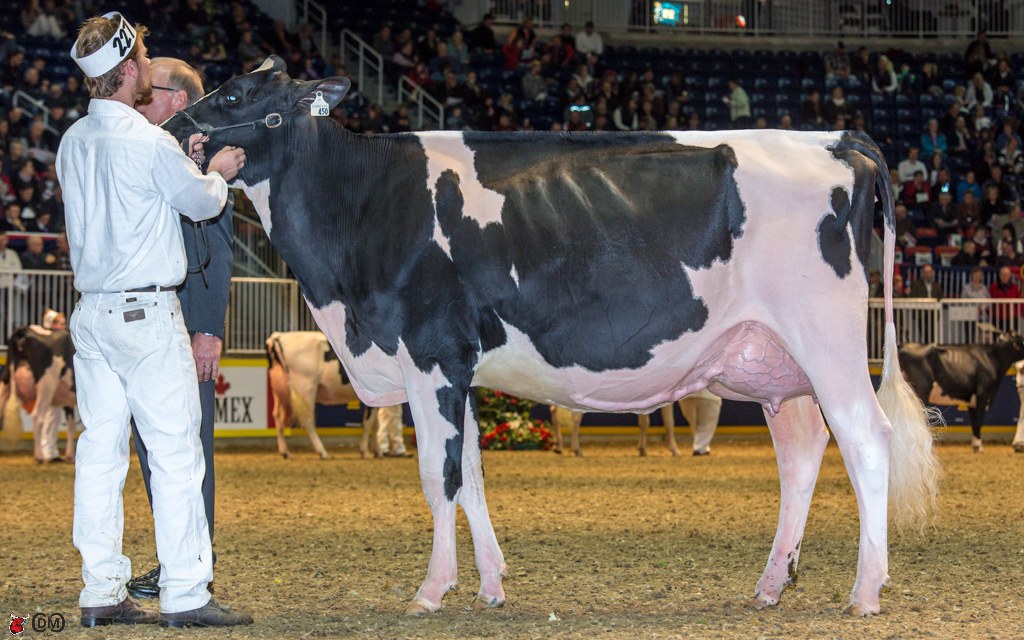
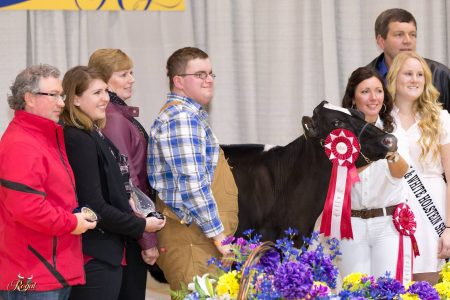
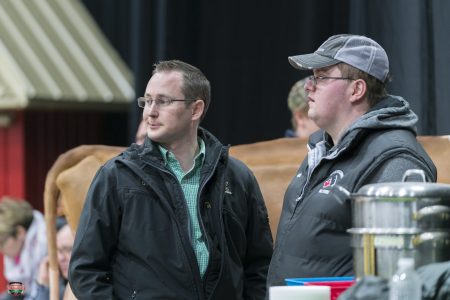
 It is the dream of every passionate dairy breeder to achieve recognition. This can be done in many ways, from success in the show ring to earning Master Breeder status. Dominique Savary of Grand-Clos Holstein in Switzerland has earned both those benchmarks. However, he has not stopped there and is continuing to gain recognition for his skill in taking great photographs of the cattle, people and dairy industry that he is so passionate about. The Bullvine recently had the pleasure of interviewing Dominique and discussing his experiences as dairy breeder, showman and photographer.
It is the dream of every passionate dairy breeder to achieve recognition. This can be done in many ways, from success in the show ring to earning Master Breeder status. Dominique Savary of Grand-Clos Holstein in Switzerland has earned both those benchmarks. However, he has not stopped there and is continuing to gain recognition for his skill in taking great photographs of the cattle, people and dairy industry that he is so passionate about. The Bullvine recently had the pleasure of interviewing Dominique and discussing his experiences as dairy breeder, showman and photographer.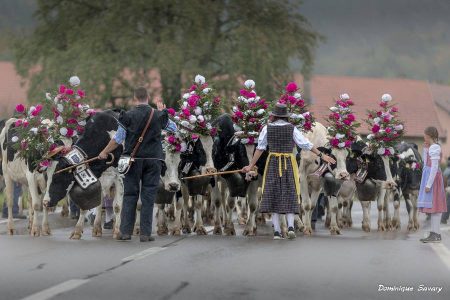
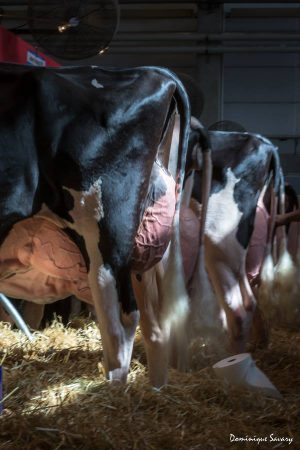 Dominique and Grand-Clos Holstein received the title of Master Breeder in 2015
Dominique and Grand-Clos Holstein received the title of Master Breeder in 2015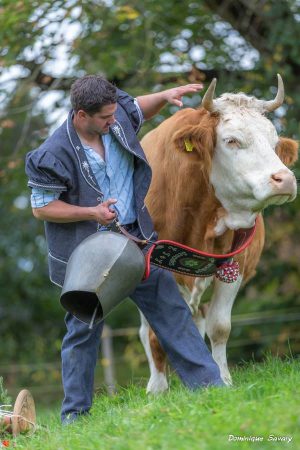 “I really want to do more studying of the technical side of photography.”
“I really want to do more studying of the technical side of photography.”  Dominique’s favorite places. “The Royal Winter Fair” “World Dairy Expo” “Quebec landscapes”
Dominique’s favorite places. “The Royal Winter Fair” “World Dairy Expo” “Quebec landscapes”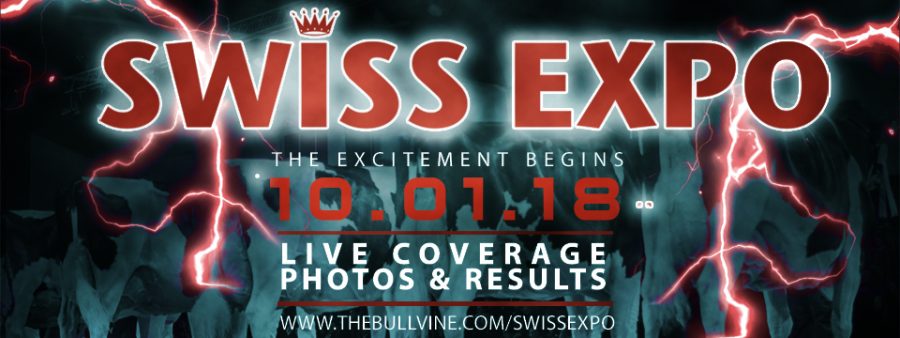
 Everyday Objects Are Given New Life
Everyday Objects Are Given New Life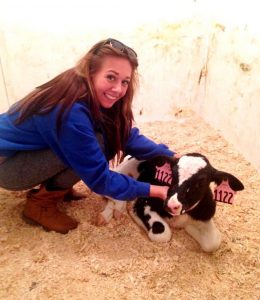 Andrea Jorgensen now living and loving life on Ri-Val-Re Farm in Webberville, Michigan unexpectedly declares that her journey to becoming a bovine artist wasn’t the usual one of lifelong familiarity with cows. “I wasn’t raised on a farm, so the whole dairy industry has really opened my eyes.” Andrea’s eye-opening experience has art also opened the eyes of dairy art lovers. Those familiar with her art, admire her eye for dairy anatomy and the way her paintings capture the nuances of the different personalities or her subjects. From a single painting or a hanging of several pieces, it is easy to see what set’s Andrea’s work apart. Her unique, ultra-colorful paintings, are comprised of layers of bright acrylics that enhance and expand our usual perception of the black, white and brown dairy cows that dairy folk love to admire. (Read more:
Andrea Jorgensen now living and loving life on Ri-Val-Re Farm in Webberville, Michigan unexpectedly declares that her journey to becoming a bovine artist wasn’t the usual one of lifelong familiarity with cows. “I wasn’t raised on a farm, so the whole dairy industry has really opened my eyes.” Andrea’s eye-opening experience has art also opened the eyes of dairy art lovers. Those familiar with her art, admire her eye for dairy anatomy and the way her paintings capture the nuances of the different personalities or her subjects. From a single painting or a hanging of several pieces, it is easy to see what set’s Andrea’s work apart. Her unique, ultra-colorful paintings, are comprised of layers of bright acrylics that enhance and expand our usual perception of the black, white and brown dairy cows that dairy folk love to admire. (Read more: 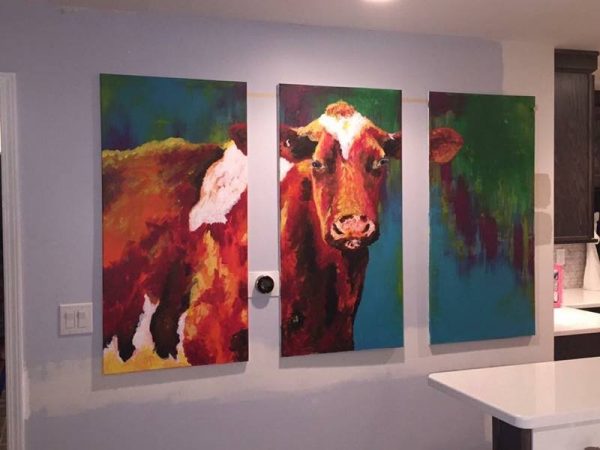
 You might say that Andrea was inspired by a favorite from her husband Jerry’s stable and, as a result, Andrea has created a stable of painted favorites to send out into the world. Much of Andrea’s painting has been done on commission and frequently the products of her talent, like the gift she painted for her husband, become gifts given and shared between other dairy admirers.
You might say that Andrea was inspired by a favorite from her husband Jerry’s stable and, as a result, Andrea has created a stable of painted favorites to send out into the world. Much of Andrea’s painting has been done on commission and frequently the products of her talent, like the gift she painted for her husband, become gifts given and shared between other dairy admirers.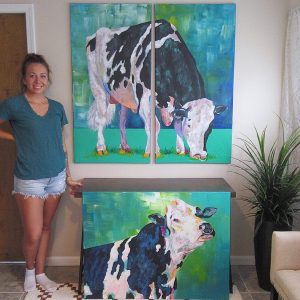 As we get to meet this artist, we are in the fortunate position of being able to use hindsight to discern what events were responsible for getting Andrea’s artistic career started. Andrea gives credit for her introduction to dairy to one her husband Jerry Jorgensen, known to many as a successful dairy breeder and recognized dairy judge. “I probably wouldn’t be painting at all if it wasn’t for him. Not just because of the support and encouragement but because of the family dairy farm. I wasn’t raised on a farm, so the whole dairy industry has really opened my eyes. I always thought cows were dumb, stinky creatures before I met Jerry.” It is an understatement to say that he changed her initial perceptions of cattle, “Yes, they can still come off (as smelly) but I have a different respect for their beauty now.”
As we get to meet this artist, we are in the fortunate position of being able to use hindsight to discern what events were responsible for getting Andrea’s artistic career started. Andrea gives credit for her introduction to dairy to one her husband Jerry Jorgensen, known to many as a successful dairy breeder and recognized dairy judge. “I probably wouldn’t be painting at all if it wasn’t for him. Not just because of the support and encouragement but because of the family dairy farm. I wasn’t raised on a farm, so the whole dairy industry has really opened my eyes. I always thought cows were dumb, stinky creatures before I met Jerry.” It is an understatement to say that he changed her initial perceptions of cattle, “Yes, they can still come off (as smelly) but I have a different respect for their beauty now.”  At this point, I must make sure that my reporting does not limit Andrea’s artistic talent to cow portraits only. As much as this is what drives The Bullvine, it isn’t fair to this gifted artist to limit the reporting of her talents to dairy only. Indeed, when asked to list her favorite works to date, Andrea responds the same way that dairy breeders, cattle judges and show string historians do, by first proclaiming what a difficult question that is. “It’s so hard to choose one! I have an attachment with all my paintings! There’s a top 5 favorites list which is constantly changing as I do more paintings.” Her diversity shows in the list she provided us with, which included what is hanging in her own home.” Right now, I would say my top 5 favorites are (in no particular order): Burt & Ernie (a painting of 2 pigs that is hanging in our living room), Antoine (a ram), Gizzard (a longhorn), Alfred (a rooster that is hanging in our kitchen), & Gatsby (a custom Jersey).
At this point, I must make sure that my reporting does not limit Andrea’s artistic talent to cow portraits only. As much as this is what drives The Bullvine, it isn’t fair to this gifted artist to limit the reporting of her talents to dairy only. Indeed, when asked to list her favorite works to date, Andrea responds the same way that dairy breeders, cattle judges and show string historians do, by first proclaiming what a difficult question that is. “It’s so hard to choose one! I have an attachment with all my paintings! There’s a top 5 favorites list which is constantly changing as I do more paintings.” Her diversity shows in the list she provided us with, which included what is hanging in her own home.” Right now, I would say my top 5 favorites are (in no particular order): Burt & Ernie (a painting of 2 pigs that is hanging in our living room), Antoine (a ram), Gizzard (a longhorn), Alfred (a rooster that is hanging in our kitchen), & Gatsby (a custom Jersey).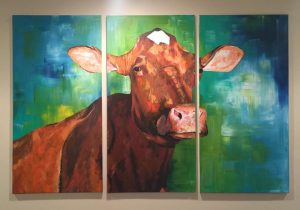 Whenever you see someone doing a successful job of using their talents to build a career, it is human nature to want to understand how they have managed to do it. As a successfully productive artist, Andrea is in the position of not only growing from her own life choices but also being able to help others who wish to start their artistic journey. Her suggestions, like her art, are bold, forthright and forward looking. Here are the three that she urges others to use.
Whenever you see someone doing a successful job of using their talents to build a career, it is human nature to want to understand how they have managed to do it. As a successfully productive artist, Andrea is in the position of not only growing from her own life choices but also being able to help others who wish to start their artistic journey. Her suggestions, like her art, are bold, forthright and forward looking. Here are the three that she urges others to use.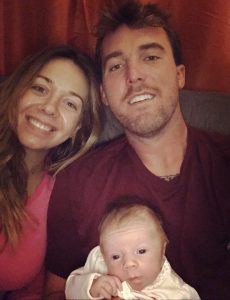 The Artist. The Mother.
The Artist. The Mother.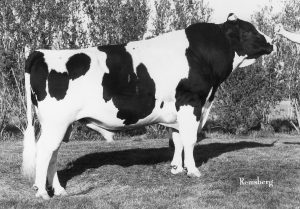

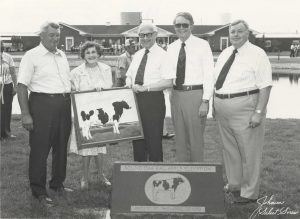 Elevation Made an Impact on Organisations
Elevation Made an Impact on Organisations





